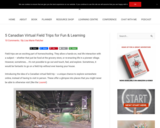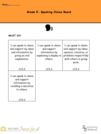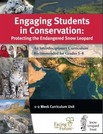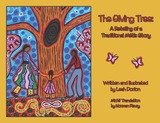
The virtual field trips on this site include:
The Parliament Buildings in Ottawa, Ontario
Iqaluit, Nunavut – The Canadian Arctic
Farm Tours
Canadian Museum of History
The Royal Tyrrell Museum

The virtual field trips on this site include:
The Parliament Buildings in Ottawa, Ontario
Iqaluit, Nunavut – The Canadian Arctic
Farm Tours
Canadian Museum of History
The Royal Tyrrell Museum

This resource has everything you need to teach your students how to write multiple paragraph compositions using the MPO and The Writing Revolution framework. *templates*sequence*modelled example from beginning to end*transitions*cheat sheet*exemplars*PPT

This lesson has students creating a self portrait using image and text.
This lesson can be completed in Art & ELA.
Morphology of the word micrography – micro – small; graphy -writing – students use small writing to create portraits!
Students will need to have a good understanding of self to create their portrait. Ideas could include words to describe the student, phrases, quotes, song lyrics, family members, poetry, or random thoughts. Some students may need guidance as to what information to include (or a model).
Sun West - Contact your school’s technology coach if require help with the technology piece of this lesson.
Extension – this lesson could be extended further into Social Studies or ELA by having students complete micrography portraits of historical figures, indigenous leaders, scientists or characters from novels or stories they are studying.
Multiage - Grade 4 students could complete this activity for prairie landscapes & Grade 5 students could complete this on pop art.

Sign up for a 45 minute virtual field trip, and follow it up with a classroom unit about human rights and being an upstander. The classroom unit includes an inquiry project.
Virtual Field Trip:
Students will learn how to be human rights upstanders by discovering the stories of people who used their personal strengths to take a stand to protect their rights and the rights of others, creating change.
Students will:
1. Learn to identify traits all upstanders possess and understand that each of us also possess these traits in our own unique way.
2. Experience exhibits and the inspiring Museum architecture as if they were at the Museum in person.
Interact with a Museum guide and ask questions to better understand how they can take action for positive change.
3. Engage in discussion, critical thinking and reflection on their role in the protection of their own rights and the rights of others.
Classroom Unit:
The Be an Upstander resource is a project-based learning unit designed to complement the “Be an
Upstander” school program. This resource targets students in middle years and encourages inquiry and
action on human rights issues. Students will examine the traits of human rights upstanders and follow
their example. By the end of the project, students will have had the opportunity to explore an issue they
are personally passionate about, share their knowledge and lead others toward action.
The Be an Upstander website is a digital student experience designed to support student learning as part
of a larger human rights themed, project-based learning unit. Students developing upstander projects
will engage in personal inquiry and action on human rights issues that matter to them. Students will learn
about the traits of human rights upstanders, be introduced to the Universal Declaration of Human Rights
and examine their personal strengths. Following the example of the upstanders they learn about,
students will be challenged to take tangible steps to becoming human rights upstanders themselves.
If you need this resource in a different format for accessibility purposes, please contact
info@humanrights.ca.
Be an Upstander website: https://humanrights.ca/upstander/#/
Complementary teacher's guide https://humanrights.ca/upstander/#/teacher-guide

Through the activities within this toolkit, students will gain an understanding of the importance of nature and how all living things are connected. These resources are geared towards students in grades 6-8.

This resource encourages students to deepen their understanding of global poverty—to see our connections to the rest of the world, to explore the roots of inequities and to understand the importance of assistance that preserves human dignity, values diversity and unleashes the inherent power of community.
Experience has shown that successful development is possible—if initiatives invest in people and ensure that beneficiaries over time become the owners of the development process. This means addressing the intertwined causes of poverty and helping communities mobilize their resources so that they can help themselves. ultimately, it means providing a hand up instead of a handout. The stories contained in this resource draw on the long-term experience of Canada and Canadians in the developing world, and encourage students to see themselves as part of the bridge of hope that unites us as global citizens.
Tips for using this resource:
The lessons in this resource have been created as a unit that builds foundational understanding and encourages exploration of key concepts and critical global issues to allow for deeper learning and meaningful attitudinal change. While we recommend that the lessons be used together, each set of lesson activities can also stand alone to provide learning opportunities around a particular aspect of international development. The term “lesson” does not imply that it can be completed within one class. Class periods vary with timetables, and experience in co-operative learning, language levels and group dynamics can all affect the time needed to complete these activities. The teacher is the best judge of these factors.
Curriculum Connections:
The themes and concepts presented provide excellent links to Ministry of Education curricular objectives/
expectations in Social Science, history and Geography programs across the country. activities also maximize a
variety of specific skill-based objectives/expectations and competencies such as critical thinking, problem solving, communication, social skills and map analysis. Each lesson outlines general objectives/expectations to assist teachers in program planning. The activities can easily be adjusted for grade and level by providing varying degrees of support, allowing additional time and adjusting expected outcomes.

Our approach to civic education is about providing opportunities for students to experience their democracy first-hand rather than by reading about it in a textbook. By reaching students throughout their school career, during and between election periods, we hope to prepare them to be responsible and informed citizens.
CIVIX programming focuses on the themes of elections, government budgets, elected representatives and digital media literacy. Programs available include:
(1) Student Vote - an election enables teachers to bring democracy alive in the classroom
(2) Student Budget Consultation - combines civic education and financial literacy
(3) Rep Day - connects students with their elected representatives for a virtual or in-person meeting
(4) CTRL-F - a module providing quick strategies students can use to investigate and evaluate information
(5) PoliTalks - supports educators in bringing political discussions to the classroom - Materials are free with
registration, and programming is designed for grades 5-12
(6) Democracy Bootcamp - professional development conference for teachers designed to improve their
democratic engagement and delivery of CIVIX programming

In this interactive online activity, you will explore the Canadian Arctic, the history of the Northwest Passage and the importance of maintaining a strong Canadian presence in the northern region.
Questions:
1. Identify four unique characteristics of the Canadian Arctic region.
2. Identify contributions made by some of the Arctic explorers who searched for the Northwest Passage.
3. To what extent did the Inuit culture in the Canadian Arctic help with the discovery of one of Franklin's lost ships?
4. What impact would climate change and the opening of the Northwest Passage have on the Inuit people socially, environmentally, and economically?
5. How might the opening of the Northwest Passage affect Canada’s claim to Arctic sovereignty and its relationship with other countries?
6. What are some of the ways Canada is getting involved in protecting the Arctic?

"Four units of lesson plans created for you with fact sheets that can be printed in PDF format, activities to engage in with your students, original videos of people sharing their stories for your classrooms, grading rubrics, critical learning strategies, and even a book club created through Indigo.
Help your students:
• Examine the concept of stereotype.
• Understand how assumptions can lead to stereotypes and unfair judgments about individuals and groups.
• Recognize the ways that stereotypes and biases affect everyone.
• Teach your students to stand up to name-calling and bigotry.
• Learn how to stop the cycle of hatred and bullying
• Learn to be real-world heroes."
Brochure describing the program: https://www.chooseyourvoice.ca/wp-cyv/wp-content/uploads/2022/03/Choose-Your-Voice-Brochure2022.pdf
Curriculum links for Grades 6-9: https://www.chooseyourvoice.ca/wp-cyv/wp-content/uploads/2017/02/SK-Curriculum-Links-Gr.6-9.pdf

Concentus provides a full downloadable unit with a teacher and student resource booklet. This unit focuses on citizenship and aims to meet the following goals:Foster Engaged citizens who question, critically examine, advocate, and defend rights and responsibilities embedded in democracy at the local, regional, provincial, national, and global levels.Foster Lifelong learning citizens who continuously strive to understand the dynamics of change in society, and they critically seek new information to make reasoned and unbiased decisions.Foster Citizens with a strong sense of self, community, and place who value and demonstrate a positive commitment to understanding these concepts as citizens, and to the exploration of citizenship responsibilities inherent in these relationships at local, regional, national, and global levels.

This resource contains an abundance of ELA infused, cross-curricular lessons organized by themes for Grades 4, 5 and 6. Non-fiction, poetry and fiction reading lessons are all included.

An inquiry-based project to map the land in your community. The key concepts in this unit are grounded in Indigenous beliefs of interconnectedness, connectedness, and respect for all things.
The driving inquiry questions for this unit are:
1. How can respect for the land be shown?
2. What do we look for when setting up a camp?
3. What stories or teachings are connected to key locations in and around our community?
4. How has the land around our community changed over time?
5. Who do we share our community’s lands with?

Currents4Kids.com / Infos-Jeunes.com is an engaging, online interactive current events resource for students in grades 3 and up.
*Download free articles/activities from recent issues of Building Bridges (grades 5 and up), The Canadian Reader (grades 3 and up) & What in the World (grades 5-10)!
This 21st century teaching and learning tool explores local, national, and international news stories. It works across all platforms, from iPods to iPads to desktop computers, allowing teachers and students to make meaningful use of the Internet whenever – and wherever – they choose.
C4K is published once per week (except over Christmas and Spring Break) from mid-August until mid-June.
Key features of this exciting new resource include:
-Weekly articles
-On-the-Lines and Between-the-Lines quizzes
-Comment page
-Links to relevant articles, resources, maps, photos and videos
-Suggested activities including pdfs of the articles and quizzes
A subscription will help you to:
-Encourage non-fiction reading by providing age-appropriate, leveled, engaging and relevant text.
-Build students' vocabulary and background knowledge.
-Make better use of technology and time.
-Provide students with an opportunity to express their opinions in a safe, structured environment and allow them to read what other students their age say on the same topics.
-Save time by automatically grading quizzes and allowing teachers to manage writing assessment online.
-Most of all, excite your students about their world, and what's happening in it!
How it works: Access for a full school year (10 months) costs $230 per school; after receiving access to the site, the subscriber may invite all the other teachers within the same school to join their account. Teachers can then create classes listing their students.

Kenaston School developed these ELA Choice Boards to support their project-based learning.

This unit consists of five lessons and is recommended for grades 5-8. The five lessons consist of:The Cat's Out of the Bag - students investigate the morphology, physical characteristics, and physical adaptations of four cat speciesMountain Mixer - students participate in a role playing, systems thinking activity to understand the relationships among species before constructing a food webIt Takes All Kinds of People - students participate in a town hall meeting in an effort to reach a concensus regarding conservation plansWhat's the Plan? - students explore the emerging issues through simulation activitiesTaking Action - students are led through a service-learning project of their choosing to raise money to donate*Planet earth videos referenced in the activities are available on YouTube.

This unit plan overview provides links to all lessons along with links to accompanying teacher support materials that include: video links, student worksheets and answer guides for individual lessons, Inquiry activities with support materials for 5 lessons on climate change and how we can work towards slowing its progress. Also includes the inquiry lesson of developing a student's own action plan.

This new website from Agriculture in the Classroom is a kid-friendly, engaging website that will bring the story of agriculture to life through highly interactive information, colourful illustrations, real-life photos, informative text, quizzes, teacher lessons and more! Students will discover the Past, Present, Evolution and Future of agriculture in Saskatchewan.

This comprehensive website contains a great deal of information and there are many curricular connections to grades 3 – 6 Science, Social Studies, and English Language Arts.
Be sure to check out the "Past", "Evolution", "Present" and "Future" tabs along the top to access LOTS of great ag resources and information!
Among other things, the site offers:
- Simple Lessons - Depending on the sections your students study and activities undertaken, different outcomes may be met. There are several ‘grab and go’ activities for students, available in both pdf and word documents.
- Brain Buster Activities - These crossword puzzles, word searches, word scrambles, matching pages, and colouring pages are great when time is limited because they can be easily stopped and started! They will challenge students to problem-solve and test their knowledge.
- Quizzes - The quizzes here are generally the same quizzes as the students will find on the web pages. They are available for each section on this website so that students progress can be tracked if you wish!

In this interactive map activity, students will explore Canada's geography. Data layers include Canada's climate, Canada's Ecology (Ecozones and Ecoregions), Canada's landforms and Population Density 2016. Students will also explore the federal elections from 2000-2019.

Explore the elements of art, culture, and identity through this guided lesson based on Leah Dorion's "The Giving Tree: A Retelling of a Traditional Métis Story." We are connected through place and culture! The values, beliefs, traditions, religion, natural environment, recreational activities, music, dance, and art that surround us help to form our identity. We share, listen, learn, and grow from and with each other. Students will think about their own identity and the many pieces that make them unique as they create a painting in the style of Leah Dorion's work.